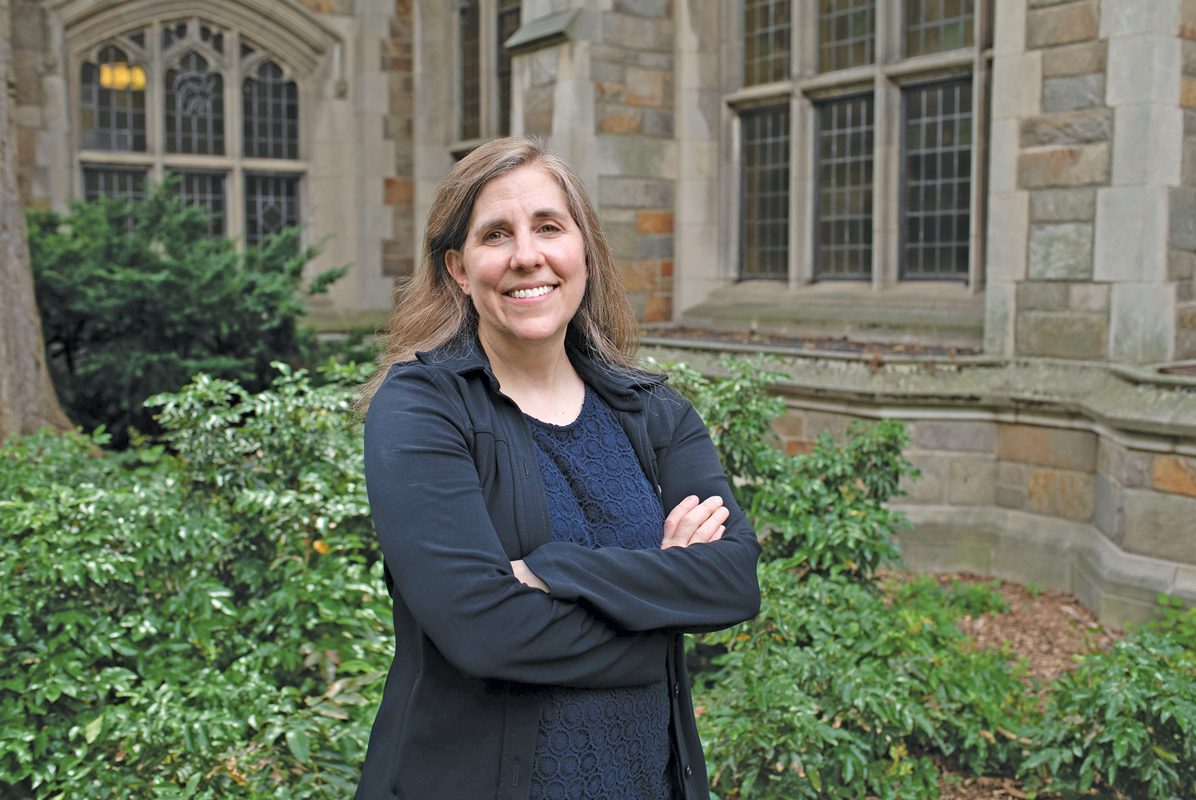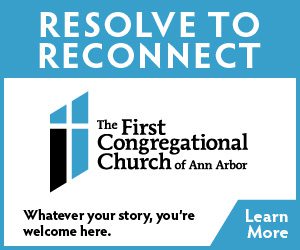
Public defenders “are fighting against a system that processes people into prison but they are, at the same time, a part of that system,” explains Institute founder and U-M law professor Eve Brensike Primus. “That struggle can be hard.” | Photo by Mark Bialek
Questions like: What if you’re appointed to defend someone with racist or Nazi tendencies or who may have done something horrific? Are you ready to confront a broken system with issues of racism and gender bias?
Public defenders sometimes have more than eighty cases simultaneously, appear in court several times a day to represent different clients, and often work in understaffed offices. It’s not uncommon for them to flee to private practice.
“They are fighting against a system that processes people into prison but they are, at the same time, a part of that system,” explains U-M law professor Eve Brensike Primus. “That struggle can be hard.” Primus had seen students who wanted to be civil rights lawyers and change the system. But they weren’t prepared.
She created the Institute in 2017 to help them navigate a complex system. The yearlong program, led by Primus with assistance from three alumni, prepares students for the realities of work— and life—as a public defender.
So far, more than eighty students have graduated from the Institute. Sixteen of the first eighteen grads are still doing indigent defense, a retention rate of nearly 90 percent. “They aren’t surprised or emotionally affected by things that happen,” says Primus.
That’s because students in the Institute get a chance to practice situations they may encounter in their careers.
“An alum pretended to be a client who was experiencing an acute mental health crisis,” recalls alum Rachael Sutherland, who practices in New Mexico. “We had five minutes to talk to this person before we had to go into court with a plea offering expiring.”
After a debriefing, Sutherland felt she’d made big mistakes. “It was really upsetting to think that could have been someone’s life,” she says. “Now when someone is experiencing an acute mental health crisis, I try to reaffirm their humanity. … I can’t emphasize how helpful the simulations were.”
They may have even helped her save a life. When a client was talking about suicide, Sutherland drew on her training in Ann Arbor and talked her down over the phone. “The hardest part of the job is that you can’t [take away] their pain,” she says. “My go-to is that if I made someone’s suffering a little less, that’s worth doing.”
Related: The Innocence Clinic: Righting the wrongful convictions at the U-M Law School
Jessica Nelson: A different path to U-M Law
Learning how to handle judges is as important as relating to clients. And in a system where clients are processed swiftly and often insensitively, persistence is essential. Alum Clara Butler, who practices in Oregon, recalls a time a judge denied bail to one of her clients. “The finding the judge made was legal,” she says, “but I felt it wasn’t right.”
In Ann Arbor, the Institute had taught Butler not to be afraid to ask for anything. So she asked again, and her client got out on bail.
“Knowing the facts of the case and the law is just part of the job,” Primus says. “Bringing them to life in a way that moves hearts and minds [is essential]. … You have to find ways to argue for each client in a way that humanizes and shows what is unique about each individual.”
The Institute prepares for that in unique ways. In an early exercise, students go to lunch in pairs and share significant, often secret, experiences with their partners. When they return to class, they tell the stories—each other’s instead of their own.
“I had shared a positive experience,” recalls Sutherland. “But I still felt so vulnerable and exposed when someone else told my story. I had no idea what was coming. When I talk about my clients, I remember what it was like for someone to talk about me in a public setting.”
“A client doesn’t choose a public defender,” Primus notes. “Their lawyer is appointed by the same system that has oppressed them.” She advises students to earn a trusting relationship with clients. “You’ll have to push to get your client’s basic rights protected. You’ll have to do more work than you would for someone who picked you and paid you.”
After a client was charged with assault, Butler was able to arrange a perfect deal: If her client pleaded guilty to property damage, the assault charge would be dropped and the penalty would be probation. But upon hearing the terms, her client screamed and demanded another lawyer.
Butler says her training in Ann Arbor taught her that anger at the system can be misdirected. “Even in that moment when she was yelling, I knew why. This was one of the worst days of her life.”
Primus compares these lawyers to ER doctors: they see people in crisis, are yelled at by clients and judges, and don’t have time to process. “There are so many ways the system can take a toll,” she says. “They need armor to handle the battle, and it is a battle.”
An important component of that armor is developing healthy habits. Each student has a self-care partner and uses checklists to attain short-term goals, including adequate nutrition and sleep, setting up boundaries between home and work, and finding a creative outlet that helps them see beauty in the world.



